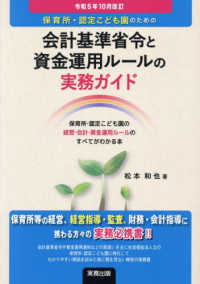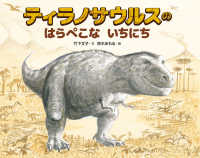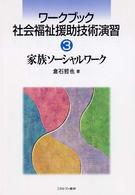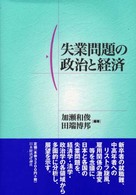Full Description
Inclusive Arts Practice and Research interrogates an exciting and newly emergent field: the creative collaborations between learning-disabled and non-learning-disabled artists which are increasingly taking place in performance and the visual arts.
In Inclusive Arts Practice Alice Fox and Hannah Macpherson interview artists, curators and key practitioners in the UK and US. The authors introduce and articulate this new practice, and situate it in relation to associated approaches. Fox and Macpherson candidly describe the tensions and difficulties involved too, and explore how the work sits within contemporary art and critical theory.
The book inhabits the philosophy of Inclusive Arts practice: with Jo Offer, Alice Fox and Kelvin Burke making up the design team behind the striking look of the book. The book also includes essays and illustrated statements, and has over 100 full-colour images. Inclusive Arts Practice represents a landmark publication in an emerging field of creative practice across all the arts. It presents a radical call for collaboration on equal terms and will be an invaluable resource for anyone studying, researching or already working within this dynamic new territory.
Contents
List of Illustrations
Foreword
Acknowledgements
Chapter 1
Situating Inclusive Arts: aesthetics, politics, encounters
Introduction
What is Inclusive Arts?
Why use the term Inclusive Arts?
What sorts of inclusions occur through Inclusive Arts Practice?
Learning disabilities, intellectual disabilities or learning difficulty? Some notes on terminology
What contribution does Inclusive Art make to Contemporary Art?
What are the potential aesthetic effects of Inclusive Arts?
Is this Outsider art?
How should work be labelled? If at all...
How does this work relate to the everyday lives of people with learning disabilities?
What are the transformative potentials of Inclusive Arts?
So what is the difference between an Inclusive Artist and a community worker?
Audience encounters 1: What can be achieved when audiences experience this work?
Audience encounters 2: How does this work intervene in regimes of disabled visuality?
Audience encounters 3: What can audiences take away from this work?
How does Inclusive Arts differ from Disability Art?
How does Inclusive Arts differ from art therapy and occupational therapy?
What are the characteristics of good quality Inclusive Arts?
What is in the rest of the book?
A note from the authors...
Paradox
A note on editing interviews in Chapters Three and Four
Accessible Summary
Chapter 2
Curation, biography and audience encounter.................................................................41
Introduction
Diversity, encounter and exchange in the cultural sphere
Alice Fox on Inclusive Curation: Putting on the 'Side by Side' exhibition at the Southbank
Art and inclusion: what is shared with other artists and curators who are placed at 'the margins'?
Jude Kelly, Artistic Director of the Southbank Centre, London
Anna Cutler, Director of Learning at Tate
Catherine Morris, Sackler Family Curator for the Elizabeth A. Sackler Center for Feminist Art at the Brooklyn Museum, NY.
Conclusions: productive difference, performative interpretation and an emphasis on unknowability
Chapter 3
How do we practice Inclusive Arts? .............................................................................85
Introduction
Frameworks, foundations, timetables and starting points
Choice and Freedom
Time
Trust
Risk and Uncertainty
An openness to all the languages we communicate in
An embodied ethic of encounter
Becoming a self aware practitioner
The answers are in the room
Interviews with the Rockets
Rocket artists: a conversation about the Wedding Cloaks
Jane Fox, Louella Forest and Alice Fox
Conclusions
Chapter 4
Interviews with the artists..........................................................................................115
Dean Rodney and Mark Williams, Heart and Soul, London
Declan Byrne and Andrew Pike, The Kilkenny Collective for Arts Talent (KCAT), Ireland
Kate Adams, Project Art Works
Charlotte Hollinshead, Action Space, London
Bethan Kendrick and Jacobus Flynn, Corali Dance Company, London
Chapter 5
Inclusive Arts Research...........................................................................................159
Introduction
Inclusive Arts Practice as a form of research: making meaning through artistic forms of inquiry
Research terminology
Who or what is the subject of Inclusive Arts Research?
What constitutes a literature review in Inclusive Arts research?
What are the methods of Inclusive Arts research?
Being a reflexive (self-aware) research practitioner
What are the possible findings of Inclusive Arts Research?
Research on Inclusive Arts: interpretation, definition and classification
Evaluating the success of your project
Thinking about social impact and cultural value
A few starting points for Inclusive Arts research
Research Project Ethics
Context
Informed Consent
Free from Coercion
Your research 'outputs' and intended audiences
Chapter 6
The Future of Inclusive Arts: building a global movement...................................................195
Introduction
What would you hope for the future of Inclusive Arts?
What is the future for learning disabled arts education?
How can learning disabled artists go professional?
What is the significance of Inclusive Arts for all and how can support worker 'buy in' be ensured?
How can Inclusive Art help advance the human rights of people with learning disabilities and achieve social justice?
The Central Human Capabilities (Adapted from Nussbaum 2003)
How can Inclusive Art work explore themes such as sex, sexuality, nudity and death?
Chapter 7
The making of this book................................................................................224
Who made this book and why?
How was this book made?
Afterword








